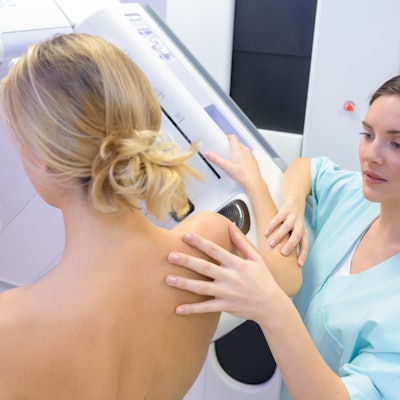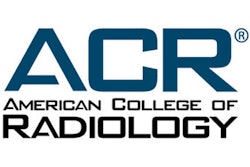
The death rate for women under 40 with breast cancer in the U.S. used to be waning, but it is now poised to rise, along with an increased incidence in distant-stage breast cancer, according to a new study in Radiology.
According to the study, between 2010 and 2017, the mortality rate for women between the ages of 20 and 39 increased by 0.5% per year. That's not a statistically significant result. But it represents a reverse from significant declines in mortality reported in prior years. A statistically significant, rapid increase in distant-stage cancer in younger women helps explain the trend, researchers said.
"To our knowledge, our analysis is the first to point out that the longstanding trend of decreasing breast cancer mortality rates in women younger than 40 years has ended," wrote R. Edward Hendrick, PhD, professor of radiology at the University of Colorado, and colleagues.
In a statement from the RSNA, Hendrick said that the data suggested the mortality rate in women under the age of 40 was likely to significantly increase in a matter of a few years. The authors prescribed focused research to explore causes and implications for the trends reported.
The study was conducted with the goal of understanding mortality and incidence rates for various age subgroups to complement what is known about the U.S. population overall. Breast cancer mortality decreased by 40% from 1989-2017, the authors noted.
"This steady decrease in breast cancer mortality rates has been attributed to increased rates of screening mammography use starting in the early to middle 1980s and improved treatment," Hendrick et al wrote.
The study involved an analysis of breast cancer mortality and incidence data from the National Cancer Institute (NCI)'s Surveillance Epidemiology and End Results (SEER) program. Results were compared for age groups over time.
"Our analysis was novel in that it analyzed the full range of available breast cancer incidence and mortality data and provided analysis on women by age decade rather than collectively across multiple age decades," Hendrick and colleagues wrote.
Researchers noted significant declines per year in breast cancer mortality for all age groups studied between 1989 and 2010. Then the picture started to change. From 2010-2017, mortality decreased significantly for age groups over 40 years (down by from 1.2% to 2.2% per year) -- but not under 40 (see table). From age 20-29, the increase was 2.8% and from 30-39 it was 0.3%, both nonsignificant. In an analysis of rates by race, researchers noted that the nonsignificant increase in mortality was driven by an increase among white women, whereas rates for Black, Asian, and Native American women continued to decline from 2010-2017.
The data show a rise in incidence of breast cancer and a rapid rise per year in the incidence rate of distant-stage disease, which likely drove the nonsignificant increase in mortality, though more research is needed to elucidate causes.
"In women aged 20-39 years at diagnosis, distant-stage breast cancer incidence rates have increased by more than 4% per year since 2000, and since 2010 are comparable to mortality rates in this age cohort," the authors wrote. "In contrast, distant-stage breast cancer rates have risen by 1.2% per year or less in women aged 40-69 years and remain well below mortality rates in this age cohort."
| Breast cancer mortality in U.S., 2009/2010-2017 | ||
| Age group | Annual percent change | p-value |
| 20-39 | 0.46% | 0.59 |
| 40-69 | -2.07% | < 0.001 |
| 70-79 | -1.22% | < 0.001 |
It's also noteworthy that the drop in mortality for those aged 70-79 was lower than what had been reported the prior 15 years.
"Among women aged at least 40 years, women aged 70-79 years have had the steepest increase in distant-stage breast cancer rates, at 1.85% per year," Hendrick and colleagues wrote. "This may be contributing to the slower decline in mortality rates in this cohort."
The authors noted that U.S. Preventive Services Task Force (USPSTF) screening mammography guidelines in 2009 recommended against screening women ages 40-49, and it did not endorse screening for women over the age of 74.
"Although these changes do not appear to have had a pronounced effect on women aged 40-69 years, women older than 65 years have shown significant declines in mammography use, with women aged at least 75 years having the largest decline in use," Hendrick et al wrote.



















